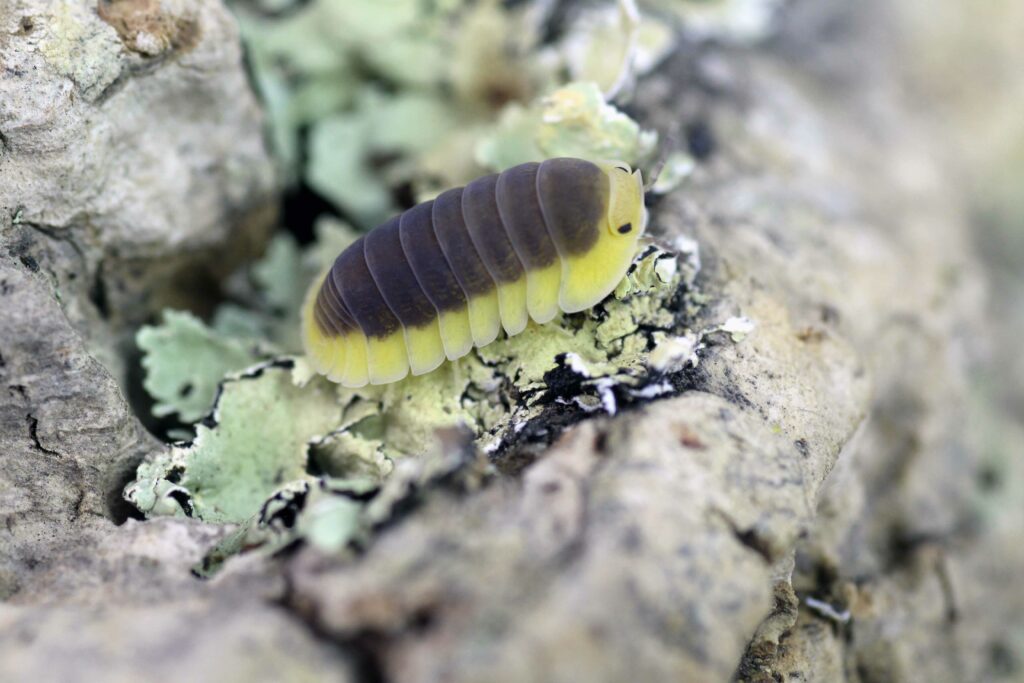Why is it important to keep isopods in the terrarium?
Nowadays we can already speak of a triumphant advance of isopod keeping in terrariums. The clever first decomposers transform faeces, leftover food and plant remains into humus and thus ensure a mould-free substrate. They also prevent mite formation and create a self-sufficient ecosystem in the terrarium. This is why isopods are often used as ground police in the terrarium. Species that reproduce quickly can also serve as ground police / clean up crew and feeders. They have a high calcium content and also prevent rickets. The species diversity of terrestrial isopods is huge and you can find the right isopod species for almost all terrarium requirements. The country of origin or climate zone is an important indicator in the search.
Isopods as show animals in the terrarium
Due to the almost unlimited variety of species, but also the colour mutations of very different isopods, keeping them as show animals is becoming more and more popular. You can observe the behaviour of these interesting crustaceans undisturbed and also select colour mutations. The design possibilities in the terrarium are almost unlimited and you can give room to your creativity. The space requirements are low and the time required is also kept within limits. Therefore isopods are also wonderfully suitable as pets for children and young people.
What is the keeping of isopods like?
Woodlice are first decomposers and their main food consists of white rotten wood and fermented leaves. Therefore, the substrate should consist of 1/3 white rotten wood and 2/3 forest humus. The top layer should consist of fermented leaves/ foliage. This covers the substrate and the food supply at the same time. A cork bark as a hiding place and a cuttlebone as a calcium source cover the interior. Isopods do not require much space and you can start with small terrariums or boxes with a capacity of 5 litres.









